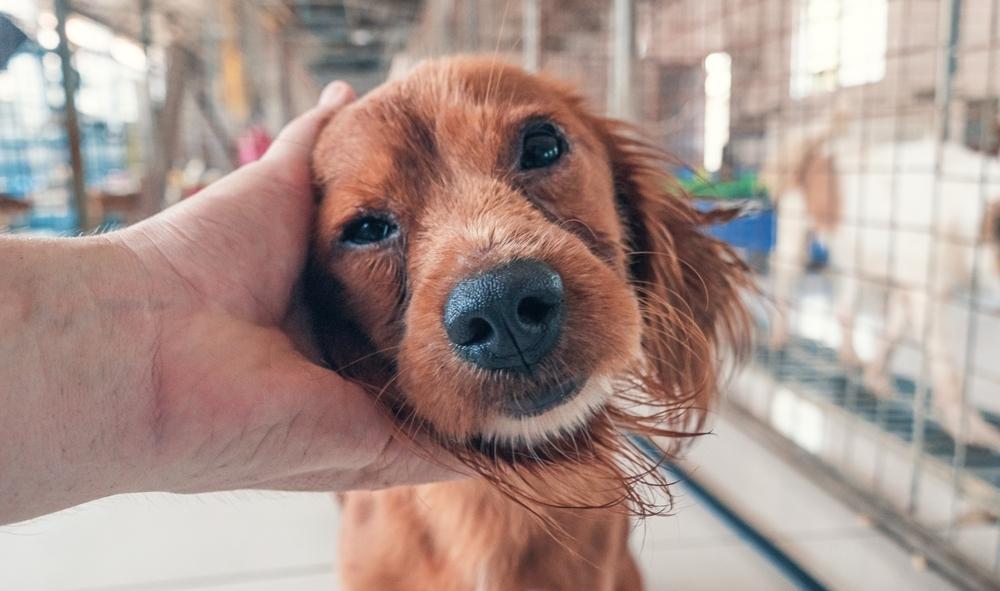

It's exciting when you're ready to adopt your next pet. But if it's been years since your last pet adoption or it's your first time, you may be wondering what to expect. To prepare yourself, you can learn more about visiting animal shelters. Here's what to know so you can enjoy a smooth shelter visit and straightforward adoption process.
What Is an Animal Shelter?
An animal shelter provides an interim home for homeless animals, such as strays or surrendered pets, and tries to find them forever homes. You may have several kinds of animal shelters in your area that may have different rules and processes.
Municipal Shelters
Your local city runs municipal facilities (commonly referred to as the "pound"). Employees take responsibility for animal control issues like nuisance or cruelty complaints and provide low-cost vaccination and spay/neuter services. Some municipal shelters provide educational outreach, including training, behavior and veterinary care help, and work with volunteers to foster or train pets to help prepare them for adoption. They accept all animals but may euthanize some when time or space runs out.

Open Admission Shelters
Independent boards run open admission shelters with bylaws defining their mission. They often have "humane" or "SPCA" (Society for the Prevention of Cruelty to Animals) in their names and offer various educational and support services. Many of these shelters accept nearly all animals relinquished to them and keep them as long as they can, euthanizing those they can't place.
Limited Admission Shelters
Limited admission shelters are similar to open admission shelters but typically limit the animals they accept based on screening criteria (like accepting only the most adoptable animals). They stringently screen adopters to ensure placed pets have the best chance for a forever home.
Animal Rescue Organizations
Animal rescues are nonprofit organizations that may have a physical shelter, or they may house animals at boarding facilities or in foster homes. Responsible breeders run rescue groups with their breed club support. They typically have limited resources, though, and often require more restrictive adoption screenings. While all rescues want to help pets, some sadly fall under the definition of animal hoarders.
Planning Your Visit
Before visiting a shelter, review the organization's website for its requirements. Also, research the shelter — a recommendation from a friend or your veterinarian can help steer you in the right direction.
Questions to Ask Animal Shelters
When planning your visit, you may want to prepare a few questions for the staff to help set your expectations.
Can I Come by Just to Look?
Maybe you're not sure about adopting or still preparing to make the commitment — can you go to an animal shelter just to look? This is usually OK, but tell staff in advance. Some animal shelters have programs that encourage you to play with and walk dogs, like Doggy Day Out, or cuddle cats. These programs help socialize puppies and kittens and improve their adoption potential. If you're unsure about adopting, talk with the staff about their experiences or look into regularly volunteering at a shelter.
Will the Shelter Hold an Animal Until I Make Up My Mind?
If you find an animal you love but want to think about, you may wonder: Can shelters hold dogs for you? What about cats? Unfortunately, most shelters won't hold animals for you because they want them to be adopted.
Can I Take Home the New Pet Right Away?
Whether you can take the pet home right away depends on the organization, so ask in advance. If you're committed to adopting, prepare a space before bringing home a dog or cat in advance of your visit in case you can adopt immediately.
What Are the Animal's Current Living Conditions?
Visiting animal shelters in advance lets you evaluate the facilities. Are dogs housed in individual kennels, in pairs or in large groups? What about the cats? Are facilities clean, smelly or noisy? How does the staff treat you and the animals?
Questions Animal Shelters May Ask You
Shelter staff will likely have some questions for you to answer, too. Screening questions help prevent dogs and cats from being returned to the shelter. Expect questions like:
What's Your Living Situation Like?
Do you live in an apartment (does your lease allow pets?) or a house (do you have a fenced yard?). Shelters rarely place cats with those wanting to let them roam outside.
Do You Have Kids or Existing Pets in Your Household?
Some shelters won't allow you to adopt puppies or kittens if you have infants or toddlers, fearing roughhousing injuries (to the kid or the pet). An adult pet may still be an option. If you have current pets, ask the shelter about having them meet the prospective pet, and have dog or cat introduction tips ready.
What's Your Experience as a Pet Parent?
They may ask you about past pets, how long they lived and any circumstances when you lost them. Lost pets, those hit by cars or those you've given up previously might be red flags to the shelter.

The Shelter Adoption Process
Although the adoption process might vary by shelter, it typically follows these general steps.
1. Speak to Staff
When choosing a cat or dog, discuss your ideal pet (e.g., big dog, adult cat, athlete, lap snuggler, etc.) with staff so they can help narrow your search.
2. View the Options
Staff may either choose potential candidates for you, or you may visit the kennel area or cattery to pick.
3. Visit With the Pet
You can often interact with the animal in a private space to see if they're a fit.
4. Fill Out Paperwork
Complete the adoption application, provide your photo identification and pay the fee before taking your new buddy home. Adoption costs vary widely — some include the cost of spaying/neutering your pet or a certificate to have it done. Other times, shelters require the pup or kitten to have the surgery before you take them home.
5. Celebrate Their 'Gotcha Day'
That's it! You have a new friend to treasure. Commemorate the day you officially came into each other's lives.
The Rescue Adoption Process
Rescues handle adoptions differently. The exact process will vary but may include the following steps.
1. Fill Out an Application
Provide your personal information and answer basic questions.
2. Complete an Interview
Complete a phone interview to get help choosing your new pet.
3. Provide References
Provide references from neighbors, other adopters or your veterinarian.
4. Schedule a Home Visit
Schedule a home visit, which usually lasts 15 minutes, so the adoption organization can see your living space, fenced yard, other pets, etc.
5. Meet the Pet
Once approved, you can meet your potential new pet.
6. Sign a Contract
If the pet is a good fit, you'll sign an adoption contract and provide any required donation to the organization.
7. Welcome Your New Pet
You can bring home your pet and celebrate your new life together!
Adding a Shelter Pet to Your Family
When you're ready to welcome a new dog or cat into your heart and home, put animal shelters at the top of your list. Shelter staff are unsung heroes doing their best to save animals and provide lifetime love connections for pet lovers. Congratulations on your new family member!

















